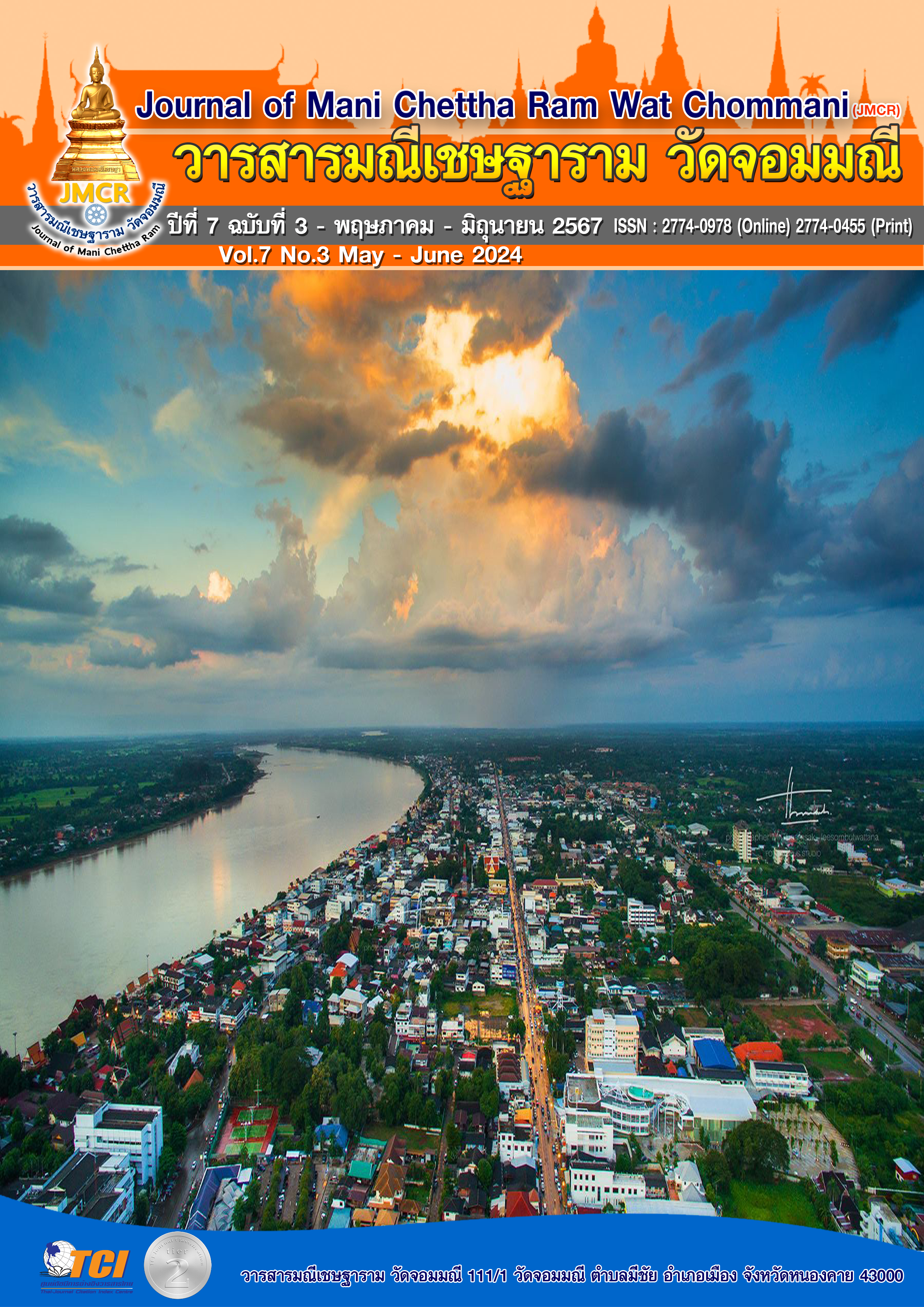DEVELOPMENT OF LEARNING MODULES USING THE 5E INSTRUCTION MODEL TO ENHANCE CREATIVITY IN SPECIAL EDUCATION INNOVATIONS FOR STUDENT TEACHERS
Keywords:
Learning Modules, The 5E Instruction Model, Creativity, Special Education InnovationsAbstract
The purposes of this research were 1) to develop learning modules using the 5E inquiry approach to reinforce special education innovative creativity for student teachers that reach 80/80 standard efficiency and 2) to study the results of applying learning modules using the 5E inquiry approach for student teachers. This study was divided into two phases. In phase 1, the learning modules using the 5E inquiry approach to reinforce special education innovative creativity for student teachers were tried out with 10 participants. In phase 2, the results of applying the learning modules using the 5E inquiry approach to reinforce special education innovative creativity for student teachers were compared. The match pair technique was used to divide the 48 samples into the experimental and control groups. The instruments used in this study were 1) the exercises at the end of each module, 2) the special education innovative creativity proficiency test, and 3) the special education innovative creativity assessment. The statistics used to analyze the data were mean, percentage and standard deviation.
The results revealed:
1) The efficiency of the learning modules using the 5E inquiry approach to reinforce special education innovative creativity was 85.20/82.36, which was above the specified standard.
2) The students in the experimental group had more knowledge with the increasing scores of after-learning that were higher than before-learning with the significant differences at 0.01.
3) Student teachers learned with the learning models using the 5E inquiry approach to reinforce special education innovative creativity for student teachers had knowledge and skills regarding special education innovative creativity higher than students in the control group with a significant difference at .01.
References
งานเลขาธิการคุรุสภา, สำนัก. (2549). คู่มือการประกอบวิชาชีพทางการศึกษากรุงเทพมหานคร: สำนักงานเลขาธิการคุรุสภา สำนักงานมาตรฐานวิชาชีพ กลุ่มมาตรฐานและจรรยาบรรรณวิชาชีพ.
จิรัญญา ไชยโยและพจมาลย์ สกลเกียรติ. (2562). การพัฒนาความคิดสร้างสรรค์วิชาวิทยาศาสตร์โดยใช้การเรียนรู้แบบสืบเสาะหาความรู้ของนักเรียนชั้นมัธยมศึกษาปีที่ 3 , 11(1), 23-38.
ภูษณิศา สุวรรณศิลป์. (2564). ความสามารถในการสร้างสื่อการสอนด้วยภาพอินโฟกราฟฟิกของนักศึกษาครูสาขาวิชาวิทยาศาสตร์โดยการใช้การจัดการเรียนรู้แบบสืบเสาะหาความรู้ 5E ร่วมกับเทคนิคการจัดแผนผังมโนทัศน์. วารสารวิชาการศรีปทุม ชลบุรี. 17(3), 12-23.
มินตรา ศักดิ์ดีและคณะ. (2566).การพัฒนาโปรแกรมส่งเสริมการคิดสร้างสรรค์เพื่อสร้างนวัตกรรมในการสอนของนักศึกษาวิชาชีพครูช่างอุตสาหกรรม.วารสารสังคมศาสตร์และวัฒนธรรม,7(6), 164-175.
ธนากร นะเริงหาย และคณะ. (2566). การพัฒนาชุดกิจกรรมการเรียนรู้แบบสืบเสาะหาความรู้ (5E) เรื่อง การศึกษาประวัติศาสตร์สมัยก่อนสุโขทัยในดินแดนไทย ชั้นมัธยมศึกษาปีที่ 1 โรงเรียนรัตนปัญญาวิชชาลัย อำเภอลาดยาว จังหวัดนครสวรรค์. วารสารวิจัยและวิชาการบวรพัฒน์, 1( 4), 1-15.
ธีรยุทธ แก้วดำรงชัย และอัมพร วัจนะ. (2566). การศึกษาผลการจัดการเรียนรู้แบบสืบเสาะหาความรู้ (5E) ด้วยบทเรียนออนไลน์บน Google Sites ร่วมกับเกมวันเดอโก เรื่องระบบนิเวศ ของนักเรียนชั้นมัธยมศึกษาปีที่ 3, 7(5), 25-37.
ประกาศคณะกรรมการมาตรฐานการอุดมศึกษา. (2565). เกณฑ์มาตรฐานหลักสูตรระดับปริญญาตรี พ.ศ. 2565.ราชกิจจานุเบกษา. เล่มที่ 139.
ประกาศกระทรวงการอุดมศึกษา วิทยาศาสตร์ วิจัยและนวัตกรรม. (2566). สถาบันอุดมศึกษาสังกัดกลุ่มสถาบันอุดมศึกษา ประจำปีงบประมาณ 2566. กรุงเทพมหานคร: กระทรวงการอุดมศึกษา วิทยาศาสตร์ วิจัยและนวัตกรรม. Retrieved from https://www.mhesi.go.th/images/2566/TUC/MHESI_TUC_e-Document.pdf
ราชกิจจานุเบกษา. (2562). พระราชบัญญัติการศึกษาแห่งชาติ (ฉบับที่ 4) พ.ศ. 2562. เล่มที่ 136 ตอนที่ 57 ก. 50. Retrieved from https://www.moe.go.th/wp-content/uploads/2022/01/MOE-Authority.pdf.




